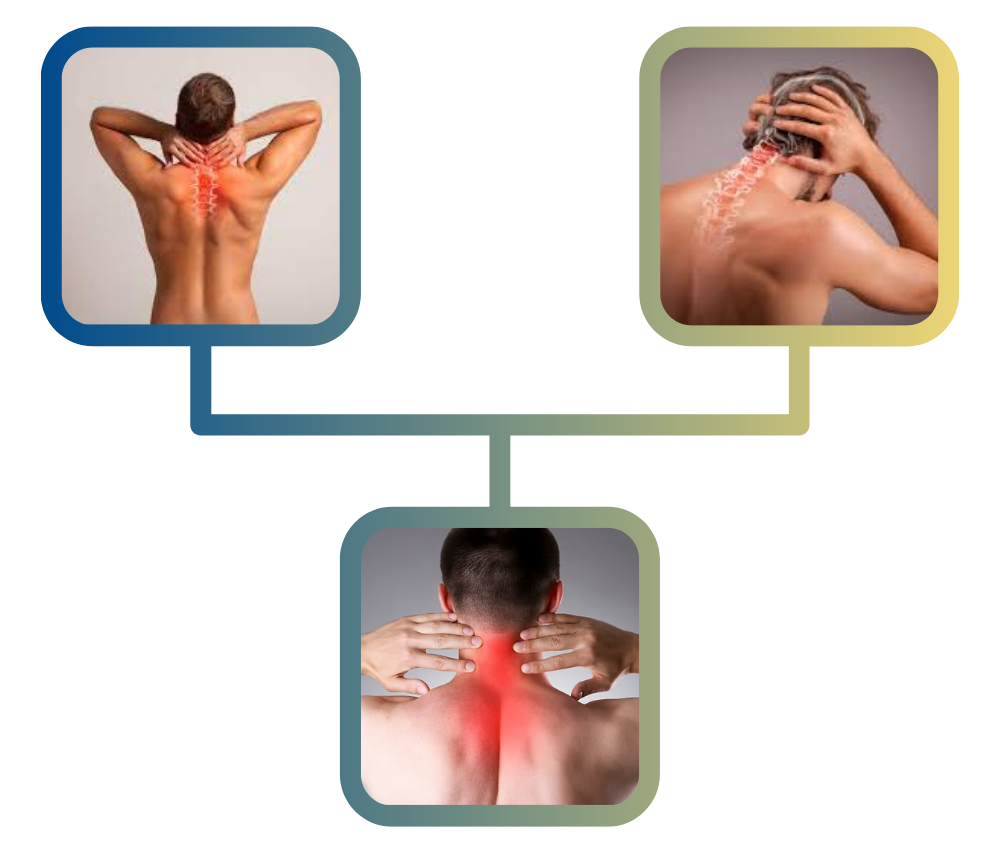“The personal, economic, social and functional impact of persistent low back pain can be substantial.”
- 216-417-3700
- Office Hours: Mon-Thu 7am-5pm

The common causes of low back pain include trauma, ageing, degeneration, and fractures. The specific anatomic sources of low back pain include muscles, tendons, ligaments, joints (including the facet and sacroiliac joints), intervertebral discs, nerve roots, bursa, and the coccyx. The spine can also become affected by disc herniations, protrusions, bulges, or extrusions.
There have been many studies which have recently helped us to better understand the common causes of low back pain. Many of these causes can be pinpointed by specifically blocking the nerves that travel to the joints, muscles, tendons, ligaments, and discs, and in doing so, enable us to accurately diagnose low back pain. Until recently, many people have suffered with low back pain without a clear diagnosis … doctors have simply diagnosed their pain as “low back pain”. And while this is a description, it does not offer a diagnosis or specific cause. There can also be other anatomic structures that are confused with low back pain, such as pain that originates in the hip joint, so they must be ruled out as well during the diagnosis process.

“The personal, economic, social and functional impact of persistent low back pain can be substantial.”
Accurate diagnoses help us to better understand the causes of low back pain and eventually treat their specific causes. Diagnostic tests that are used to help us make an informed diagnosis include MRI scans, radiographs (x-rays), EMG nerve conduction studies, CT scans, diagnostic injections, myelograms, and CT myelograms.
Low back pain is a common health issue which can cause debilitating pain as well as functional impairment. Accurate diagnosis is the key to effective treatment and conservative therapy should be utilized before considering surgery.

The prevalence of patients reporting a Grade 2-to-4 pain level, which is defined as “high pain and dense intensity with disability”, has increased. In other words, more people are experiencing a long-lasting pain that impairs their daily function and is associated with significant health, social, and economic impacts as well.
Causes of neck pain can include traumatic events, degeneration, fractures or dislocations, tumors, and infections. Some of the structures that can cause pain in the neck include the discs, nerve roots, bones, muscles, tendons, bursa and ligaments. Facet joints have been implicated as the source of pain for nearly half of all patients who suffer from chronic neck pain, and the reason is simple … they have a significant and abundant nerve supply which can cause pain to be referred to the back of the head, neck, shoulders, and upper arms. But despite the recent explosion in popularity of imaging studies such as x-rays, MRIs, and CT scans, facet joint pain doesn’t always show up. In fact, most of these studies are not reliable for an accurate diagnosis of facet-related pain, so other measures must be taken.
“Long lasting pain relief can be obtained by radio frequency ablation, which is commonly known as burning of the nerves. This gives anywhere from 9 to 18 months of continuous pain relief.”
A diagnostic tool that can also help diagnose the source of neck pain (in addition to x-rays, MRI scans, and CT scans), is an EMG nerve conduction study. Where MRI scans utilize magnetic waves in order to image soft tissues, and CT scans and x-rays are better at imaging bones and high density structures, an EMG nerve conduction study helps to evaluate the integrity of the nervous system and the conduction of both motor and sensory nerves.
Treatments for neck pain include non-steroidal anti-inflammatory medications (NSAIDs), anti-depressant medications (Elavil, trazodone), anti-convulsants (Lyrica, Neurontin), opiate pain medications, physical therapy, chiropractic care, neck braces, gravity inversion therapy, stretching, manipulation therapy, injection therapy, radiofrequency ablation, and spine surgery.
Spinal surgery should be a last resort and should be embarked on only after conservative therapy has not alleviated the pain. An accurate diagnosis is the key to successful outcome for patients suffering from chronic neck pain.
“Doctor Kozmary and his whole crew are the best pain management crew in Cleveland. I have gone to a lot of doctors trying to find a good Doctor that cares about the patients’ pain relief instead of just handing out pain pills. They try injections and other procedures to try to get rid of the pain. I like the fact that they drug test to make sure they know people are not trying to just get pills that don’t need them.” – Chris A
Cleveland Pain Specialists
Providing compassionate, expert care for chronic and acute pain management. Your comfort is our priority.
© Copyright Cleveland Pain Specialists & Steven Kozmary, M.D. Privacy Policy | Terms & Conditions.
neck pain relief cleveland, back pain relief cleveland, back pain treatment cleveland, cleveland back pain treatment, cleveland back and pain
Back pain is a prevalent issue affecting millions of individuals, significantly impacting their daily lives and overall well-being. It can lead to limitations in mobility, decreased productivity, and emotional distress, making timely intervention crucial for effective management.
Research indicates that chronic back pain can lead to long-term disability and increased healthcare costs. Addressing the underlying causes through comprehensive assessments and targeted therapies can mitigate these effects and enhance the quality of life for those affected.
Neck pain can arise from various factors, including injuries, degenerative diseases, and poor posture. Understanding these causes is essential for developing effective treatment plans tailored to individual needs and conditions.
For instance, conditions such as cervical spondylosis and herniated discs are common culprits of neck pain. Additionally, lifestyle factors, such as prolonged screen time and improper ergonomics, can exacerbate these issues, highlighting the importance of preventive measures and early intervention.
There are numerous treatment options available for managing back and neck pain, ranging from conservative therapies to advanced medical interventions. Identifying the most appropriate treatment method is essential for achieving optimal results and improving patient outcomes.
Common treatments include physical therapy, chiropractic adjustments, medication management, and, in some cases, surgical interventions. Each treatment plan should be customized based on the patient's specific diagnosis, lifestyle, and preferences to ensure the best possible recovery.
Accurate diagnosis is the cornerstone of effective pain management. It allows healthcare professionals to identify the specific source of pain and tailor treatment strategies accordingly. Without a proper diagnosis, patients may undergo ineffective treatments that do not address their underlying issues.
Diagnostic tools such as MRI, CT scans, and EMG studies play a crucial role in pinpointing the exact cause of pain. By employing these techniques, clinicians can develop targeted interventions that not only relieve pain but also prevent future complications.